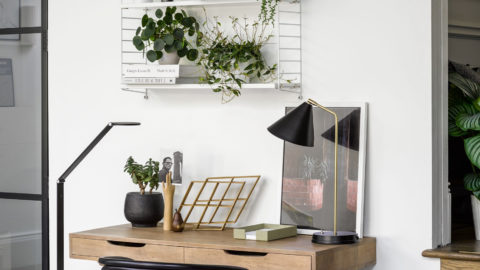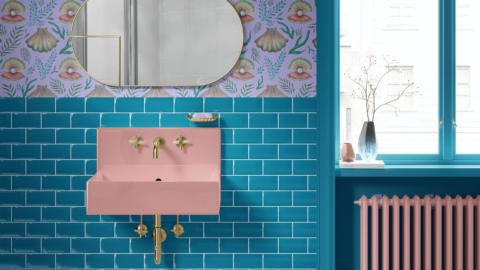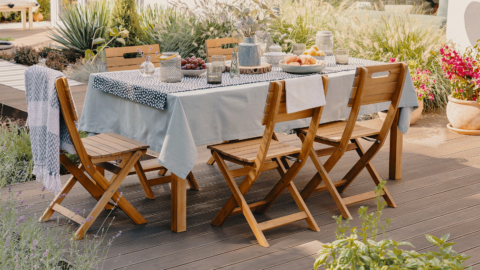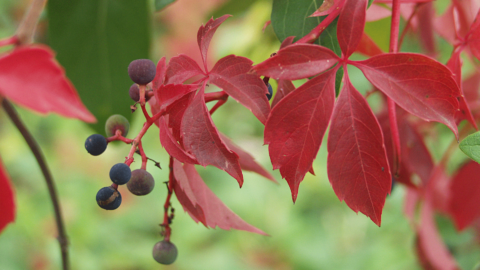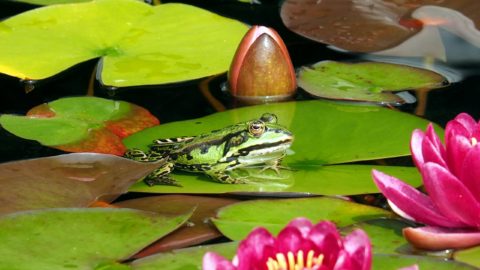Making The Most Of Your Container Garden
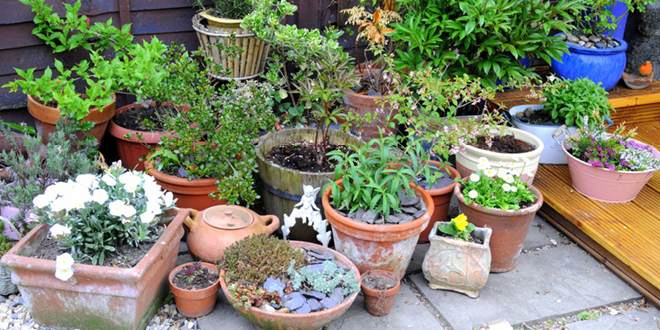
Suitable for most plants, containers filled to the brim with seasonal or permanent plants can brighten up a corner of the garden and they are extremely versatile too! So whether you are looking for a charming welcome into your garden, giving your home added kerb appeal or you’re looking for handy home-grown herbs, we’ve got hints, tips and ideas for you to make the most of your container garden.
When to plant
Plants take a short time to settle into their containers – expect more growth from spring and summer-planted containers compared to those of autumn and winter. For permanent plants now is the hour! They are best planted in early spring as they will establish quickly. Summer-flowering plants should be planted in May when frosts have gone and for winter plants, go for a late summer or autumn planting.
Which type of container?
The container choices are vast, it’s important to think both style and substance. If you have a container that will need to be outside all year choose a frost-proof terracotta one, which will keep you in good stead when the temperatures drop. If you are looking at imitation-terracotta they can be useful for large plants due to their lightweight design and they can be moved indoors when a frost is forecast.
Whatever the design, size does matter! Think about the root system when choosing one, small pots dry out quickly so plant small plants in large containers, and by doing so you will reduce the chore of constant watering. However, caution is needed for plants such as camellia or citrus with small root balls as excess compost can become waterlogged and result in root rot and ultimately plant death.
Combating waterlogging and other draining problems is key to managing a container garden. Ensure adequate drainage by selecting the right size pot and the necessary number of drainage holes – if extra holes are needed drill where appropriate. Consider placing stones or broken terracotta at the bottom of your container and raising the container up on bricks to guard against waterlogging.
How to plant
Place drainage material in the bottom of the container, such as broken up polystyrene, stones or broken terracotta. For a container 45cm (18in) deep, a 9cm (3½in) drainage layer is sufficient
Fill the container with compost, leaving room to arrange the plants on the surfaceRemove the plants from their pots, tease out the roots gently and work more compost around the rootballs. Ensure that the top of the rootball is level with the surface of the compost.
Firm the compost around the plants, water well to settle and top up with compost if necessary.
Make sure there is a gap of about 2.5cm (1in) between soil level and the top of the container. This will ensure there’s room for the water to soak in.
Source: The Royal Horticultural Society
How to maintain
To maintain your container garden, check the compost moisture levels daily from April to September, watering if dry. As well as compost, feeding is important. The Royal Horticultural Society advises “Start feeding four to six weeks after planting, unless the compost contains a slow-release fertiliser. From April to September, use a general-purpose liquid feed, unless the compost contains a slow-release fertiliser. Feeding is not needed in winter.”
Make sure you deadhead regularly to encourage growth and where necessary re-pot in early spring. For permanent displays, re-potting is required at least every two to four years to prevent problems with drying out and waterlogging. Reduce watering during winter months and try to avoid compost-freeze by moving containers under cover or covering them in bubble-wrap or old bed sheets.
By Jacob White

